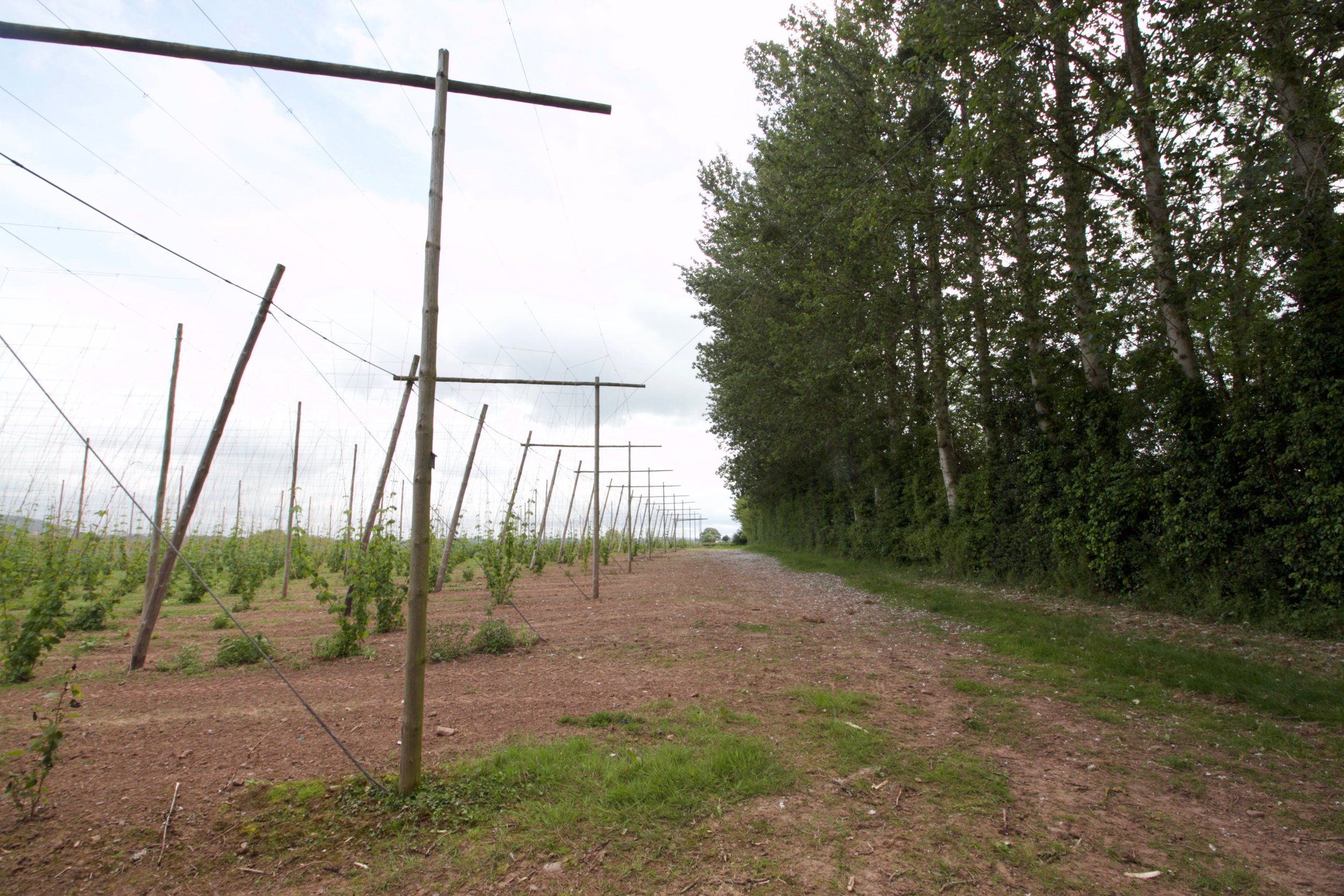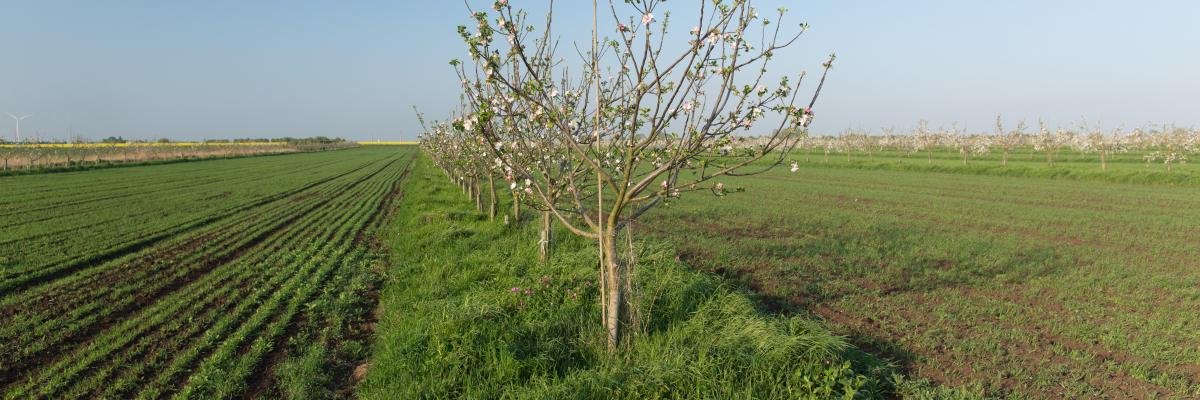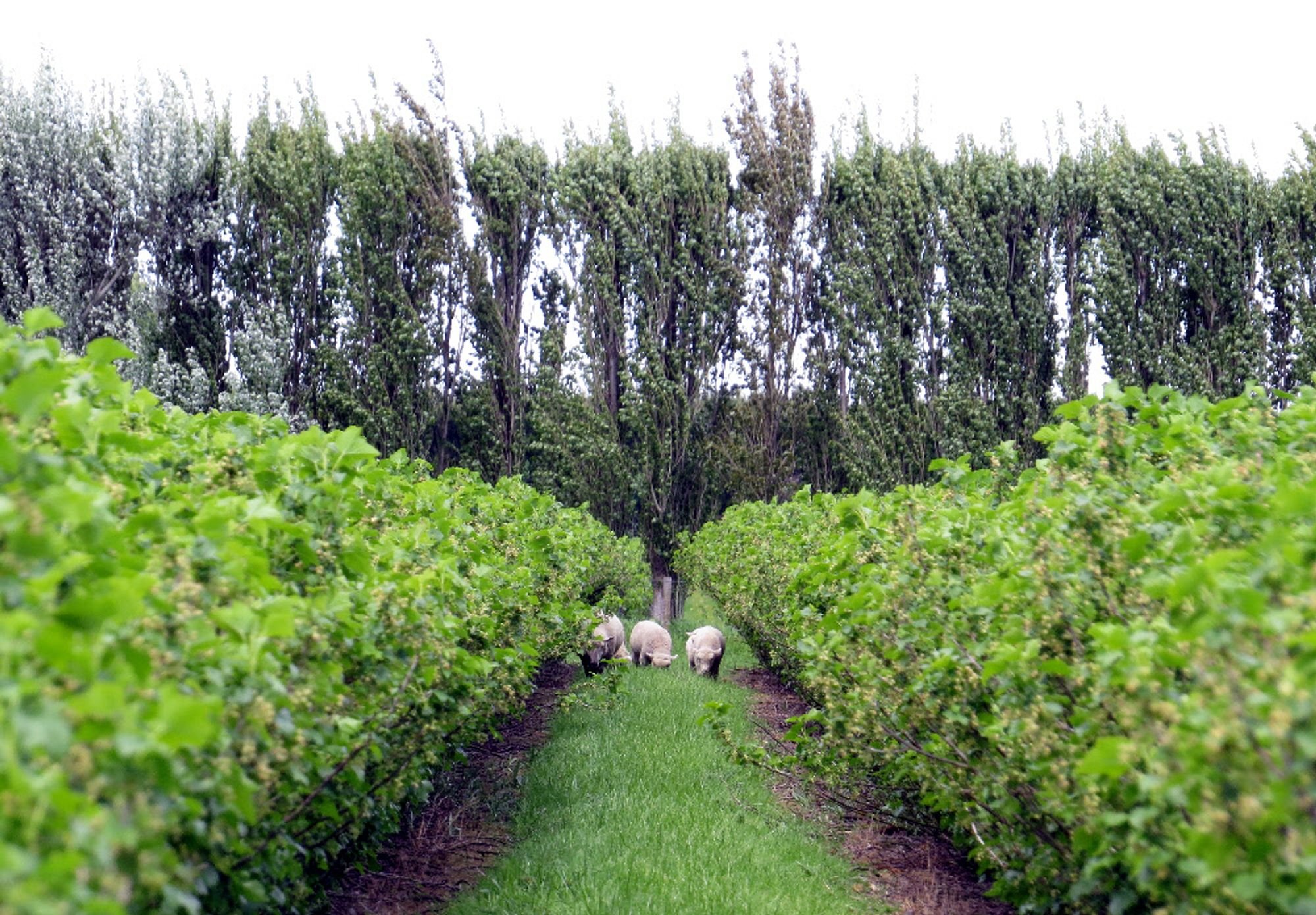Windbreaks & Shelterbelts for Farmland Resilience
As 2020’s midwest derecho swept across the Corn Belt, farmers and landowners alike witnessed the profound toll extreme weather can take on agriculture. With 12 million acres affected, and 1.7 billion dollars in damages within the agrifood sector alone, this startling event was a wake-up call for many, harkening back to Dust Bowl era weather that led to famine, acute poverty, and mass rural exodus.
In the aftermath of 30’s era calamity, agriculture was transformed: the establishment of the Soil Conservation Service, the spread of no- and low-till farming, and the adoption of pivot irrigation all worked to reduce similar disasters. But climate change and irrigation concerns cast a shadow of drought on the landscape, with experts warning that modern Dust Bowl conditions – namely higher temperatures, drier droughts, and dwindling aquifers –bodes ill for the breadbasket.
Fortunately, shelterbelts, windbreaks, and agroforestry can mitigate the damage of extreme weather on farms.
Windbreaks prevent damages and put money in your pocket
Farming in a windtunnel can feel sisyphean. Repairing damage to out-buildings and utilities caused by storms can be time-consuming and expensive, while wind damage to crops, including lodging and “green snap,” can result in crop failure.
Some damage is irreparable. When wind and storms sweep across the landscape, they erode topsoil – an estimated 5 tons per acre each year – leading to productivity declines that could reduce corn and soy yields by 50-70%, according to experts.
Windbreaks not only save a farm from damages, but also put money in your pocket:
They increase downwind crop productivity by 15-20%, and cut utility costs by 20-40%.
For livestock producers, windbreaks can reduce animal stress and increase cattle weight gain by an estimated .24 lbs per day.
In Kansas alone, revenue from hunting in windbreaks is valued at $21.5 million annually.
Beyond productivity gains, cost savings, and hunting revenue, windbreaks can serve as revenue-generating enterprises in their own right when planted with profitable fruit, nut, timber, biofuel or fiber crops.
Examples of revenue-generating windbreaks include:
🐄 Windbreak paddocks, planted with fast-growing black locust and hybrid poplar trees, can shade livestock in the summer. Paddock windbreaks provide eventual timber revenue, and can be thinned for rot-resistant fence posts. These windbreak paddocks are wider than a standard windbreak, but serve multiple functions. The “wind shadows” (i.e. downwind protection areas) of 400-900 ft provide ample protection for both grazing animals and outbuildings.
🎄 Evergreen windbreaks can be thinned for Christmas Trees in their early years. Thinning is an integral part of maintaining a conifer windbreak, because some air should actually move through it. A windbreak that is 60-80% dense will work better than a solid wall: wind will hop up over a solid wall and speed up again, whereas a small amount of air moving through densely-planted trees prevents this.
🪵 Tall timber species like hybrid poplar, which provide a “wind shadow” between 450 and 1350 ft, can be paired with rows of native shrubs such as blackcurrant and serviceberry to protect from low-blowing winds and diversify farm incomes through berry sales. Thinning of whole rows or individual trees for timber harvest can actually extend the life of the windbreak by reducing competition among plants and mitigating pest pressure.
🌰 Long, narrow bands of chestnut trees, interspersed across a landscape, can yield $16,000/acre in revenue from nuts, at maturity. In addition, they’ll slow winds that would otherwise desiccate grain crops.
⚠️ It is important to note that while windbreaks can produce revenue from selling fence posts and other products, it can be worthwhile to plant species in the windbreak that are solely planted to slow the wind. Regionally-adapted slower-growing conifers, combined with fast-growing biomass willow or austree willow can accomplish this.
Landscape-Level Impacts
Beyond the individual farm, windbreaks can alter weather patterns at the landscape level. A study of the Great Plains Shelterbelt, a New Deal era effort resulting in 220 million trees planted from Texas to the Dakotas, has demonstrated that in the decades following windbreak establishment, farms in abutting counties benefited from increased precipitation and less extreme heat. A number of theories seek to explain why drought follows deforestation and rain follows forests, but the general pattern is that evapotranspiration from trees emits water vapor into the air, which can cause rain clouds to form.
Windbreak functions
Windbreaks like the examples above reduce wind, storm and snow damage via:
🧱 Physical obstruction: Acting as physical barriers that intercept, deflect, and slow wind and snow.
🧽 Controlled porosity: Reducing turbulence down-wind from the barrier.
💧Microclimate creation & moisture retention: Moderating temperature extremes in ways that favor early-spring establishment and reduced evapotranspiration.
🐝 Ecosystem services: Decreased erosion improves soil structure over time. Other co-benefits include improved biodiversity and water quality.
The terms windbreak and shelterbelt are used interchangeably, though shelterbelts more often refer to larger scale plantings, such as the Great Plains Shelterbelt.
General considerations for windbreak and shelterbelt design
Orientation and shape: Positioning tree rows perpendicular to prevailing winds is common, as is situating windbreaks at right angles against prevailing winds.
Height: Determines wind shadow and protected zone. Protection zones extend 10-15x the height of the windbreak.
Uninterrupted Length: Air penetrating the windbreak through gaps (e.g. roads) can impact efficacy. A length:height ratio of at least 10:1 is recommended. Roads can be positioned at the ends of windbreaks to minimize their impact.
Density: Optimal density depends on windbreak function: protecting structures (>60%); protecting crops (40-60%); snow distribution (30-40%). Higher densities reduce the wind shadow. Density depends on in-row spacing, number of rows, species selected, and pruning methods.
Distance from Protected Area: Optimal distance will vary depending on windbreak function (e.g. 2-5x tallest row for crop protection, 100 feet minimum for snow).
Species Selection: Factors such as adaptability to local climate and soil conditions, growth rate, height, density, and resistance to pests and diseases should inform species selection. Selecting adaptive, resilient species is grows more important in light of climate change.
Maintenance: The post-planting establishment period is of primary importance, requiring weed and grass control and supplemental irrigation (weather-dependent) during the first 5 years of growth. Thinning and pruning can extend the life of the planting, as well as increase productivity if income is being sought.
Increasing Windbreak Adoption
Despite their many benefits to individual farms and the larger landscape, windbreak establishment and health is in decline across the US. This is alarming, given their role in mitigating soil erosion and extreme weather impacts, to say nothing of their economic benefits.
The primary drivers of windbreak removal include conflict with machinery (namely center pivot irrigation), and a broad perception that other conservation practices like no-till make windbreaks unnecessary – relics of the Dust Bowl era. While the adoption of other conservation practices is no doubt important, the actual efficacy of no-till and conservation tillage on erosion can be inconsistent, varying based on factors like crop type; for example, corn residues provide much better erosion control than soy.
Fortunately, the evolution of windbreak design has kept pace with modern farming: Modern windbreaks like twin-row high density plantings, shallow windbreaks, and shrub windbreaks in center-pivot irrigated fields can reduce the headaches associated with older designs.
A number of financing strategies can further ease the burden of establishing, renovating, and maintaining windbreaks. EQIP is a commonly tapped option, but new funding sources like the Climate Smart Commodities grants can cover much of the cost for interested producers, agribusinesses, and portfolio managers.
Interested in exploring windbreak options for your farm?
Propagate is a regenerative agriculture platform that helps landowners, farmers, agribusinesses, and portfolio managers navigate agroforestry solution design and implementation.






